Solo Travellers
The 14 Best Hotels in Charlotte, North Carolina
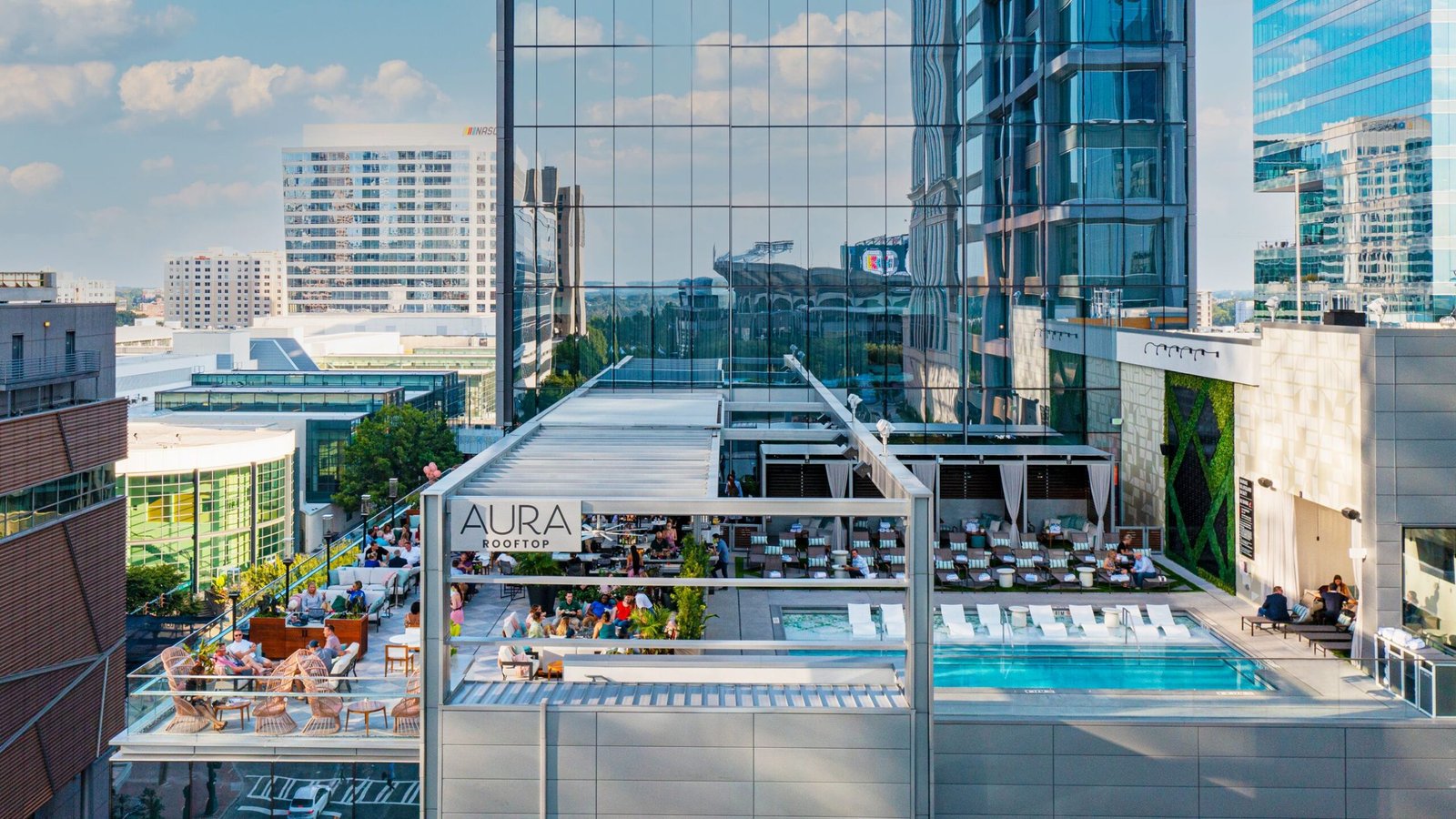
With a nickname like the Queen City, it’s no surprise that Charlotte (named for Queen Charlotte of Mecklenburg-Strelitz) is a powerhouse among the Southeast’s cities, on par with Atlanta. It’s the most populous city in North Carolina, and its location at the state line draws day trippers and weekenders from South Carolina, too. A prosperous banking and finance industry drove the city’s modern evolution into this shiny cosmopolitan center, and you’ll find many of the world’s leading hotel brands here.
Settle in at prestigious properties like the J.W. Marriott or Kimpton in Uptown (for the uninitiated, this is what you can think of as “downtown”). Or, if you prefer to explore the neighborhoods, restful stays near high-end shopping (The Renaissance in Southpark, The Ballantyne) set a leisurely tone for your trip. Some travelers want nothing more at the end of the day than to escape the bustle, and hotels in residential neighborhoods invite you to unwind in a sumptuous mansion amid the trees (like The Duke Mansion) or veg out in style (like Kasa Edison House). Ready to book your trip? Read on for the best hotels in Charlotte for every type of traveler.
FAQ:
What part of Charlotte is best to stay in?
Is it better to stay Downtown or Uptown Charlotte?
Here’s the thing: the bustling, action-packed city center of Charlotte is properly known as Uptown, so there’s not really a “downtown.” Those looking to stay in Uptown have their pick of top-tier names, like The Ritz-Carlton, Omni, and the Grand Bohemian Hotel. Those who prefer the funky, looser style typical to many metropolitan “downtowns” should look—ironically—farther north to NoDa (short for North Davidson), the city’s historic arts district.
What is the best month to visit Charlotte?
The Queen City surges with activity in the fall and spring—think September to November and March to May. October is a local favorite with cooling breezes and changing foliage, while temperatures linger in the just-warm-enough range to hang out in the beer garden at Olde Mecklenburg Brewery and mill about the South End Farmers Market.
How we choose the best hotels in Charlotte, NC
Every hotel review on this list has been written by a Condé Nast Traveler journalist who knows the destination. When choosing hotels, our editors consider properties across price points that offer an authentic and insider experience of a destination, keeping design, location, service, and sustainability credentials top of mind.
Read our complete Charlotte travel guide here.
Solo Travellers
Free roaming: Your holy grail to solo travel

Imagine you’re on a whirlwind solo trip across continents—livestreaming a sunrise hike in Cappadocia, posting reels in real-time from a café in Santorini, hopping time zones from Tokyo to Toronto—all without ever searching for Wi-Fi or rationing data. With Airtel’s unlimited data roaming plans, staying connected is no longer tied to hotel lobbies or coffee shop hotspots. The moment you land at the airport, your Airtel International Roaming plan auto activates—no scrambling for public Wi-Fi, no waiting in long queues for a local SIM. Whether you’re uploading high-res photos, video calling loved ones, or navigating unfamiliar streets, Airtel’s global coverage ensures your journey never skips a beat. Activating your roaming plan is just as easy—via the Airtel Thanks app, website, or at retail stores, this plan moves with you—adapting to impromptu itineraries and content on the go.
Whether you’re a content creator, a globe-trotter, or a vlogger documenting your journey around the world—with unlimited data and auto-renewals, it is now possible to turn global travel into a spontaneous adventure—so you can focus on the journey, not the logistics. Wherever you go, Airtel becomes your invisible travel companion, keeping you connected, even when you’re far from home.
For more information, click here.
*T&C Apply. Pack calculation done basis 3999/30 days postpaid pack (100 mins/day, speed throttle post use of 30 GB).
Solo Travellers
‘It feels as though the mountains are ours alone’: family-friendly hiking in the French Alps | France holidays
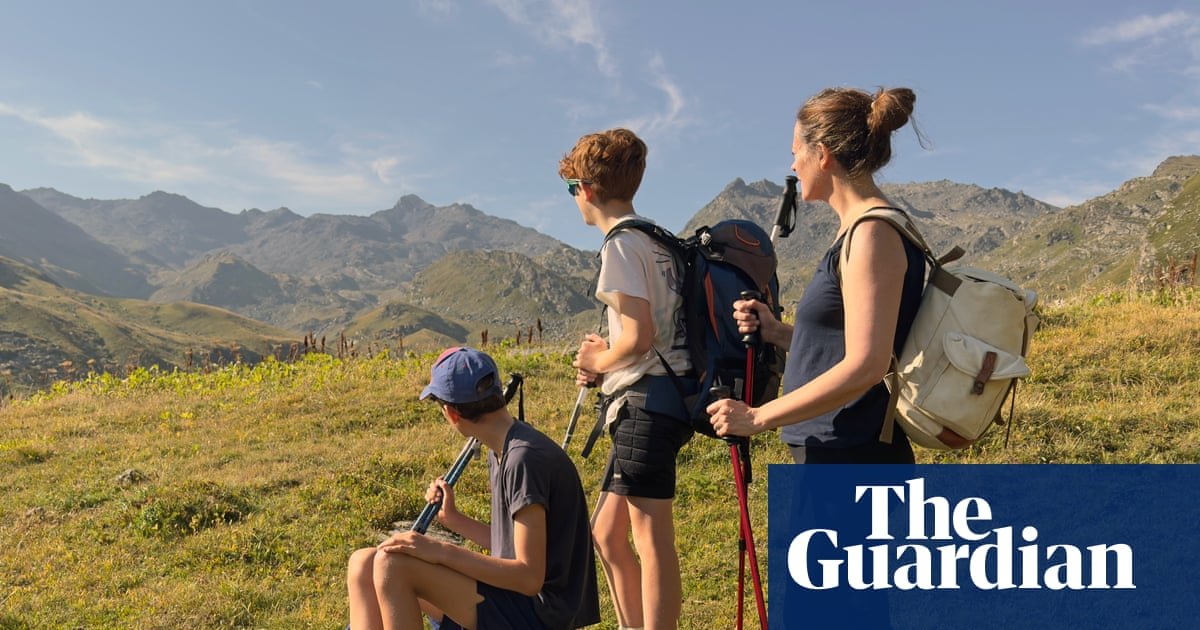
‘This is probably the wildest place in the whole of the Vallée des Belleville,” says Roland, our guide, sweeping one arm across a bank of saw-toothed peaks as though conducting a great, brawny orchestra. My husband, two sons and I are midway through a four-day stretch of the Grand Tour de Tarentaise hiking trail in the French Alps, and we’ve stopped near the top of Varlossière, a roadless side valley among a great arc of mountains that runs to the west of the ski resorts of Val Thorens, Les Menuires and Saint-Martin-de-Belleville. Hiking up here from Gittamelon, a rustic, summer-only mountain refuge in the neighbouring Vallée des Encombres, we’ve paused to exhale breath, and to inhale the primeval views.
High peaks loom either side of us, their shocking green flanks underscored by an elegantly designed bothy and its shepherd-dwelling twin, and we can hear the rush of water far below. It’s midmorning but the moon is low and large in a cloudless sky, adding to the otherworldly scene. Climbing higher, an eagle flies past almost at eye level, no more than six metres away. Though we meet three other hikers on the other side of the Col du Bonnet du Prêtre, the 2,461-metre (8,074ft) pass that leads from Varlossière to the Nant Brun valley – and detect from sheep bells that at least two shepherds must be somewhere among the great folds of these hills – it feels as though the landscape is ours alone.
That may not be the case for long. Soaring temperatures across Europe this summer have fuelled a rush to the mountains, social media funnelling many visitors to the same honeypots and creating infrastructure pressure points; in Italy some farmers in the Dolomites have resorted to installing turnstiles and charging tourists €5 to pass, incensed at having their meadows trampled.
Navigating these challenges is no easy task for Europe’s mountain resorts, which are increasingly encouraging summer tourism as the climate crisis signals a limited lifespan for ski tourism. One of the biggest issues is that many of these new summer visitors are first-timers, unfamiliar with the mores of mountain adventuring: treading gently on the environment, respecting local countryside codes, wearing suitable kit, knowing how to read a map rather than an app (we had no wifi or phone signal for two days of our hike), and packing enough food and water. In France, call-outs to mountain rescue services by inexperienced hikers have risen so sharply that workers now trawl social media looking for potential disaster hotspots in advance.
In an attempt to tackle these issues, the Vallée des Belleville tourist office has introduced a range of summer initiatives to support new hikers, from kids’ mountain skills activity days to free wildlife talks and events. Lower-level footpaths and bike trails for children, pushchair-users and visitors with reduced mobility makes it safer for those groups to access the mountains, and easier for local communities to manage the larger numbers that tend to make use of them. And while challenging marked trails through more remote corners of the mountains are fairly easy to follow, visitors are encouraged to hire a guide (something we are glad of at Col du Bonnet du Prêtre, when Roland tracks down the shepherd owner of an aggressive dog and persuades him to move away from the trail).
It is at our accommodation each night, in mountain refuges, that we really see support for new hikers in action, though. Several have been designed specifically with families and first-timers in mind, including Refuge Plan Lombardie, where we end our 12-mile (19km) hike from Gittamelon.
We are not first-timers, but staying here is a good opportunity to remind ourselves of the rules of refuge culture, and for the boys to hang out with other children. Though we hike in, it’s possible to park about 20 minutes’ away and walk from there, something several guests with preschoolers have done, grateful for the treasure hunt-style sculpture trail the refuge has installed along the route to entice younger visitors uphill.
Though we have seen less than a handful of hikers during the day, we find Refuge Plan Lombardie as packed as a marmot’s burrow. Approaching it in the soft glow of the afternoon, earlier arrivals have already nabbed the terrace’s deckchairs with a view. Instead, we collect beers and lemonades and find a free bench to enjoy them before swapping our boots for the refuge’s borrowed Crocs, and finding our allocated bunk beds.
Refuges like this are more than just places to sleep. Full of city folk temporarily escaping to higher ground, they’re the human equivalent of a centuries-old rhythm of transhumance, where families bring sheep and cows up to the high pastures for the summer months. At dinner, we share a table with a mother from Chambéry who has brought her four-year-old son for his first visit to a refuge. “My friend gave me a list of the most family-friendly ones and I’ve decided to start a new tradition of visiting one every year with my son. I want him to love them as much as I do,” she told us between bites of a Savoyard blueberry version of Eton mess.
The previous evening, in cosy Gittamelon refuge, we’d shared similar tales, and a dorm, with three generations of a Belgian family who were following the same trail as us but in the opposite direction. And the evening before that, we’d followed suit with other families, playing cards at Refuge du Lac du Lou, a modern, child-friendly refuge just 90 minutes’ hike above the resort of Les Menuires.
Between Lac du Lou and Gittamelon we’d hiked with Estelle Roy-Berthaud from Les Menuires tourist office, following the trail through harebells, cotton grass, neon-coloured lichens and, much to the boys’ delight, thickets of wild blueberries. Stopping for lunch with Mont Blanc spearing the horizon in the distance, I ask her how the valley is managing increasing summer numbers.
“Summer tourism is a relatively new concept here, so we are not seeing the overtourism issues experienced by more well-known summer destinations in the Alps,” she says. “We’re also protected by not having too many places to stay. In winter, we have around 27,000 beds, but in summer this reduces to just 8,000, so this naturally restricts the number of people in the valley.”
Further along the trail, at Plan Lombardie, I wake in the night and slip out of one of those beds. Outside, the sky is luminous with stars, while the peaks and folds of the land are now entirely black beyond the winking of a distant light – a shepherd’s stove, perhaps, or the torch of a camper. The Belleville valley still feels wonderfully wild tonight.
Transport from London to Chambéry was provided by Flixbus; return fares from £89pp. Half-board accommodation at Refuge du Lac du Lou from €39 children/€69 adults, Refuge Gittamelon €46pp, and at Refuge Plan Lombardie from €32 children and €52 adults. Hiking guides from €25 for a half-day (guides-belleville.com). More information at lesmenuires.com
Solo Travellers
Business.Scoop » ‘Table For One Please’ – Solo Travel Taking Off In South Australia

Press Release – South Australian Tourism Commission
In South Australia, solo doesnt mean alone. From the moment you arrive, youre welcomed like a local. Market stallholders at the Adelaide Central Market offer samples and greet you with familiarity, while bartenders pour local wines and share stories …
Solo travel is trending, with a growing number of Kiwis packing their bags and setting off on adventures alone – and South Australia is taking notice. With its blend of world class wine regions and vibrant cultural experiences, the state is fast becoming a top destination for independent travellers. From December 2022 to December 2024 there was nearly a quarter more (24%*) visits from New Zealanders travelling alone.
Katina Vangopoulos, owner of Adelaide based Flamboyance Tours, saw a sharp increase of solo traveller bookings in the 2024-25 year. Her walking tours cover history and culture, food and street art and provide an immersive experience led by locals.
“Solo travel has definitely increased for us. Our Paint and Palate Street Art Tour is the most popular choice among solo travellers, attracting a diverse range of age and gender. We’re seeing more solo female travellers than ever before and walking tours like ours are a safe, social and fun way to connect with other travellers.”
Jay Patel of Another Kind Group, owns three restaurants in Adelaide. “Over the past year, we’ve noticed a significant increase in solo diners across all of our restaurants – Press* Food and Wine, Peel St, and Leigh Street Wine Room. Whether they’re visiting from overseas or interstate, these guests are embracing the solo dining experience with confidence. Many are eager to immerse themselves in South Australian hospitality, often opting for bar seating where they can interact with staff. They appreciate the opportunity to receive personalised food and wine recommendations and are generally open-minded when it comes to their dining choices. In fact, most tend to favour set menus, allowing them to sample a wider variety of dishes. This growing trend is pushing the hospitality industry to tailor its offerings to cater to solo travellers and diners.”
What’s on offer if you are travelling solo
In South Australia, solo doesn’t mean alone. From the moment you arrive, you’re welcomed like a local. Market stallholders at the Adelaide Central Market offer samples and greet you with familiarity, while bartenders pour local wines and share stories from behind the bar. It’s easy to feel part of the place, even if you are travelling on your own.
South Australia is also LGBTQIA+ inclusive, with an increasing number of tour operators officially accredited with the Welcome With Pride Program. Accessibility is also a priority, with inclusive tourism experiences that offer comfort and peace of mind throughout your stay.
To help you get started the South Australian Tourism Commission have curated solo travel guides, designed like a local’s handwritten map, full of personal recommendations and hidden gems. The thoughtful resources help you find not just the right places to eat, drink, and explore, but the kind of experiences that fill your cup and linger long after you return home.
Travel tips for solo travellers
For Kiwis keen to experience South Australia on their own terms, it’s now easier than ever to make the journey. Flying into Adelaide is relaxed and straightforward, from there, it’s just 15mins into the CBD, giving you the freedom to explore at your own pace.
Air New Zealand offers daily direct flights from Auckland to Adelaide, with a new Christchurch–Adelaide service launching 27 October. Qantas will also begin non-stop flights from Auckland to Adelaide four times a week from 31 October. There’s also a handy guide to solo travel on the South Australia Tourism website.
* Tourism Research Australia, International Visitor Survey December 2024.
Content Sourced from scoop.co.nz
Original url
-

 Brand Stories1 month ago
Brand Stories1 month agoBloom Hotels: A Modern Vision of Hospitality Redefining Travel
-

 Brand Stories1 month ago
Brand Stories1 month agoCheQin.ai sets a new standard for hotel booking with its AI capabilities: empowering travellers to bargain, choose the best, and book with clarity.
-

 Destinations & Things To Do1 month ago
Destinations & Things To Do1 month agoThis Hidden Beach in India Glows at Night-But Only in One Secret Season
-

 Destinations & Things To Do1 month ago
Destinations & Things To Do1 month agoUntouched Destinations: Stunning Hidden Gems You Must Visit
-

 AI in Travel1 month ago
AI in Travel1 month agoAI Travel Revolution: Must-Have Guide to the Best Experience
-

 Family Travel2 months ago
Family Travel2 months agoThings to Do Indoors in New Jersey
-

 Brand Stories2 months ago
Brand Stories2 months agoVoice AI Startup ElevenLabs Plans to Add Hubs Around the World
-

 Brand Stories1 month ago
Brand Stories1 month agoContactless Hospitality: Why Remote Management Technology Is Key to Seamless Guest Experiences
-
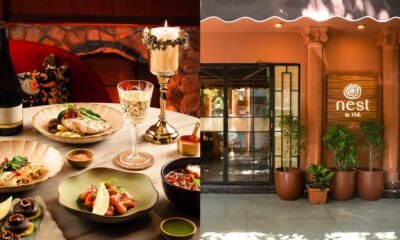
 Restaurants & Food5 months ago
Restaurants & Food5 months ago10 New Restaurants In Delhi NCR To Head To This Month
-

 Brand Stories2 months ago
Brand Stories2 months agoHow Elon Musk’s rogue Grok chatbot became a cautionary AI tale

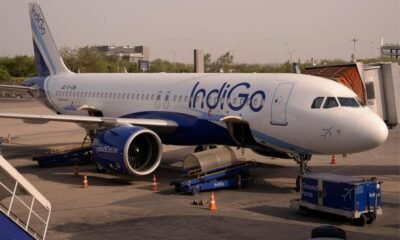

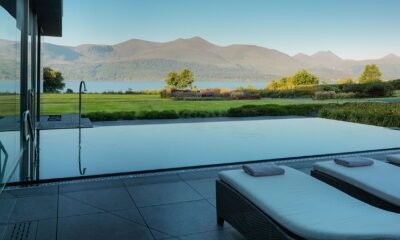



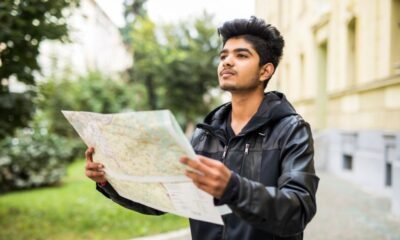





You must be logged in to post a comment Login